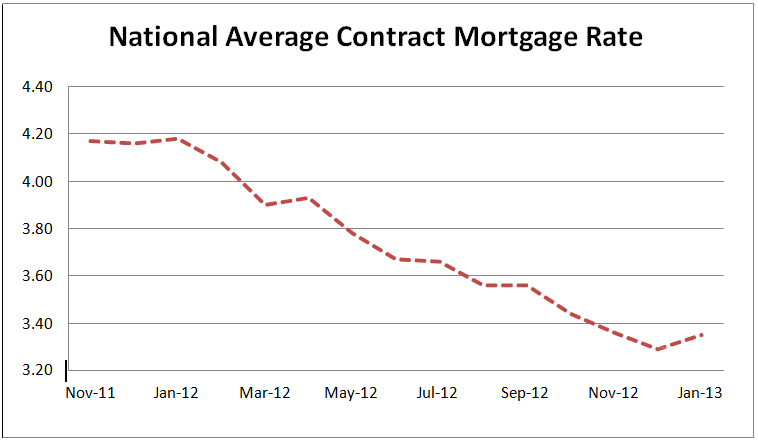This implies that as monetary organizations entered the market to provide money to homeowners and ended up being the servicers of those loans, they were also able to develop new markets for securities (such as an MBS or CDO), and benefited at every step of the process by gathering costs for each transaction.
By 2006, majority of the biggest financial firms in the country were involved in the nonconventional MBS market. About 45 percent of the largest firms had a big market share in 3 or 4 nonconventional loan market functions (stemming, underwriting, MBS issuance, and servicing). As displayed in Figure 1, by 2007, almost all originated home loans (both conventional and subprime) were securitized.

For instance, by the summertime of 2007, UBS held onto $50 billion of high-risk MBS or CDO securities, Citigroup $43 billion, Merrill Lynch $32 billion, and Morgan Stanley $11 billion. Because these organizations were producing and investing in risky loans, they were thus extremely susceptible when real estate prices dropped and foreclosures increased in 2007.
In a 2015 working paper, Fligstein and co-author Alexander Roehrkasse (doctoral prospect at UC Berkeley)3 analyze the reasons for scams in the mortgage securitization industry throughout the monetary crisis. Deceitful activity leading up to the market crash was extensive: home loan pioneers commonly tricked debtors about loan terms and eligibility requirements, in some cases concealing info about the loan like add-ons or balloon payments.
Banks that developed mortgage-backed securities frequently misrepresented the quality of loans. For instance, a 2013 suit by the Justice Department and the U.S. Securities and Exchange Commission found that 40 percent of the underlying mortgages came from and packaged into a security by Bank of America did not Visit this website fulfill the bank's own underwriting standards.4 The authors look at predatory lending in home loan originating markets and securities fraud in the mortgage-backed security issuance and underwriting markets.

The authors show that over half of the financial institutions examined were participated in extensive securities scams and predatory financing: 32 of the 60 firmswhich consist of mortgage lending institutions, business and financial investment banks, and cost savings and loan associationshave settled 43 predatory financing matches and 204 securities scams suits, amounting to almost $80 billion in penalties and reparations.
The smart Trick of What Is A Bridge Loan As Far As Mortgages Are Concerned That Nobody is Discussing
A number of firms entered the home mortgage market and increased competition, while at the very same time, the pool of practical debtors and refinancers started to decrease quickly. To increase the pool, the authors argue that big firms motivated their begetters to engage in predatory lending, often discovering customers who would take on risky nonconventional loans with high rates of interest that would benefit the banks.
This allowed monetary organizations to continue increasing profits at a time when standard home loans were limited. Firms with MBS issuers and underwriters were then forced to misrepresent the quality of nonconventional home loans, often cutting them up into various slices or "tranches" that they could then pool into securities. Furthermore, since big firms like Lehman Brothers and Bear Stearns were participated in several sectors of the MBS market, they had high rewards to misrepresent the quality of their mortgages and securities at every point along the lending process, from stemming and providing to financing the loan.
Collateralized financial obligation obligations (CDO) numerous pools of mortgage-backed securities (typically low-rated by credit agencies); subject to scores from credit score companies to show threat$110 Traditional home loan a type of loan that is not part of a particular federal government program (FHA, VA, or USDA) however ensured by a private loan provider or by Fannie Mae and Freddie Mac; normally repaired in its terms and rates for 15 or 30 years; typically conform to Fannie Mae and Freddie Mac's underwriting requirements and loan limits, such as 20% down and a credit history of 660 or above11 Mortgage-backed security (MBS) a bond backed by a pool of mortgages that entitles the shareholder to part of the month-to-month payments made by the borrowers; might include traditional or nonconventional mortgages; best company to sell your timeshare subject to scores from credit rating firms to show danger12 Nonconventional mortgage federal government backed loans (FHA, VA, or USDA), Alt-A mortgages, subprime home mortgages, jumbo home mortgages, or house equity loans; not bought or safeguarded by Fannie Mae, Freddie Mac, or the Federal Real Estate Finance Company13 Predatory loaning imposing unjust and violent loan terms on borrowers, often through aggressive sales techniques; making the most of debtors' absence of understanding of complex deals; outright deception14 Securities fraud actors misrepresent or withhold details about mortgage-backed securities utilized by investors to make choices15 Subprime mortgage a home loan with a B/C rating from credit companies.
FOMC members set monetary policy and have partial authority to control the U.S. banking system. Fligstein and his colleagues discover that FOMC members were avoided from seeing the approaching crisis by their own presumptions about how the economy works utilizing the structure of macroeconomics. Their analysis of conference records expose that as housing prices were rapidly increasing, FOMC members consistently minimized the severity of the real estate bubble.
The authors argue that the committee relied on the framework of macroeconomics to reduce the seriousness of the approaching crisis, and to validate that markets were working logically (when did subprime mortgages start in 2005). They keep in mind that the majority of the committee members had PhDs in Economics, and for that reason shared a set of assumptions about how the economy works and relied on typical tools to keep track of and control market anomalies.
46) - what happened to cashcall mortgage's no closing cost timeshare business mortgages. FOMC members saw the rate changes in the housing market as different from what was occurring in the monetary market, and assumed that the total financial impact of the real estate bubble would be restricted in scope, even after Lehman Brothers applied for insolvency. In truth, Fligstein and associates argue that it was FOMC members' inability to see the connection in between the house-price bubble, the subprime mortgage market, and the financial instruments used to package home mortgages into securities that led the FOMC to minimize the seriousness of the oncoming crisis.
What Is A Bridge Loan As Far As Mortgages Are Concerned - The Facts
This made it nearly impossible for FOMC members to anticipate how a slump in real estate rates would affect the entire nationwide and worldwide economy. When the home loan industry collapsed, it stunned the U.S. and worldwide economy. Had it not been for strong federal government intervention, U.S. workers and house owners would have experienced even greater losses.
Banks are as soon as again financing subprime loans, especially in car loans and little organization loans.6 And banks are once again bundling nonconventional loans into mortgage-backed securities.7 More recently, President Trump rolled back a lot of the regulative and reporting provisions of the Dodd-Frank Wall Street Reform and Customer Protection Act for little and medium-sized banks with less than $250 billion in properties.8 LegislatorsRepublicans and Democrats alikeargued that a number of the Dodd-Frank arrangements were too constraining on smaller sized banks and were restricting financial development.9 This brand-new deregulatory action, coupled with the increase in dangerous lending and investment practices, could create the financial conditions all too familiar in the time duration leading up to the marketplace crash.
g. consist of other backgrounds on the FOMC Reorganize employee payment at financial institutions to avoid incentivizing dangerous habits, and boost policy of brand-new financial instruments Job regulators with understanding and keeping an eye on the competitive conditions and structural modifications in the monetary marketplace, particularly under circumstances when firms may be pressed towards scams in order to keep revenues.